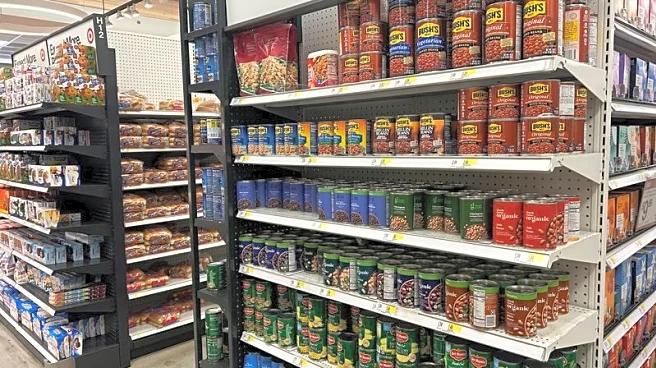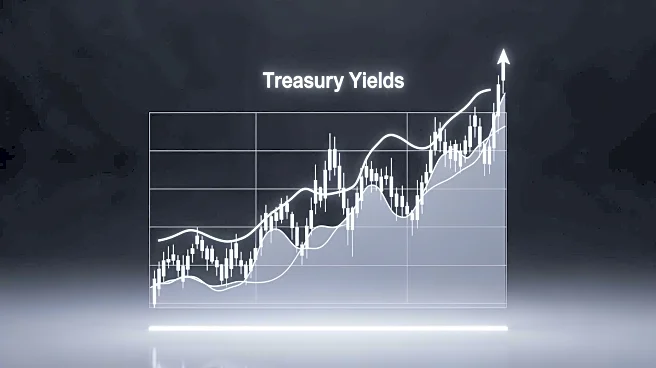What's Happening?
The Bureau of Labor Statistics reported that the consumer price index rose 3% in September, up from 2.9% in August. This increase was driven by higher gasoline prices, which rose 4.1% from the previous
month, and tariffs affecting prices for goods like clothing and furniture. Despite being below economists' expectations, inflation remains above the Federal Reserve's 2% target. The report, delayed due to a government shutdown, provides insight into the current state of the US economy ahead of the Federal Reserve's upcoming meeting. The CPI data also enabled the Social Security Administration to announce the 2026 cost-of-living adjustment.
Why It's Important?
Inflation impacts consumer purchasing power and business costs, influencing economic stability and policy decisions. The current rate of 3% is concerning for economists, as it remains above the Federal Reserve's target. Tariffs are contributing to higher prices for imported goods, affecting consumer budgets and business operations. The Federal Reserve's anticipated interest rate cut could provide relief by lowering borrowing costs, potentially stimulating economic activity. However, persistent inflation could lead to higher costs for goods and services, impacting household budgets and business profitability.
What's Next?
The Federal Reserve is expected to announce an interest rate cut next week, which could influence borrowing costs and economic activity. Businesses may continue to adjust pricing strategies in response to tariffs and inflation pressures. Consumers could face ongoing price increases for essentials, impacting household budgets. The government shutdown has delayed other economic data releases, making the inflation report a key indicator for policymakers. The Federal Reserve's decision will be closely watched for its impact on the economy and inflation trends.
Beyond the Headlines
The inflation rate's impact extends beyond immediate price changes, influencing long-term economic strategies and consumer behavior. Businesses may need to navigate tariff uncertainties and potential political implications, affecting pricing and supply chain decisions. The inflation rate also affects social security adjustments, impacting millions of Americans reliant on these benefits. The broader economic context, including employment trends and global trade dynamics, will continue to shape inflationary pressures and policy responses.












